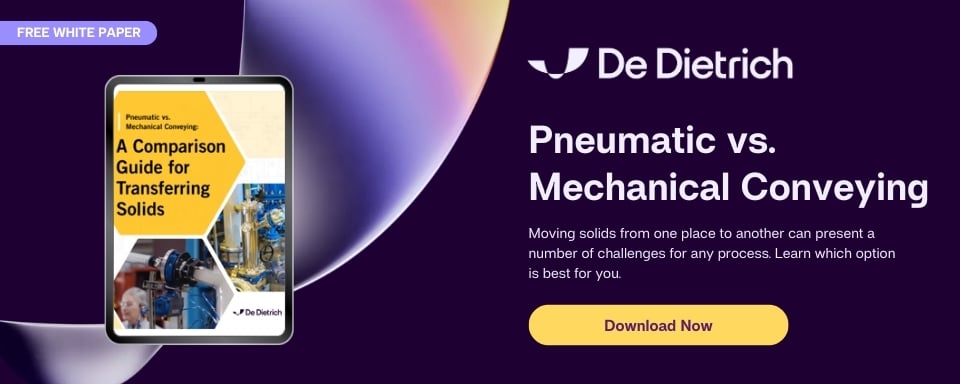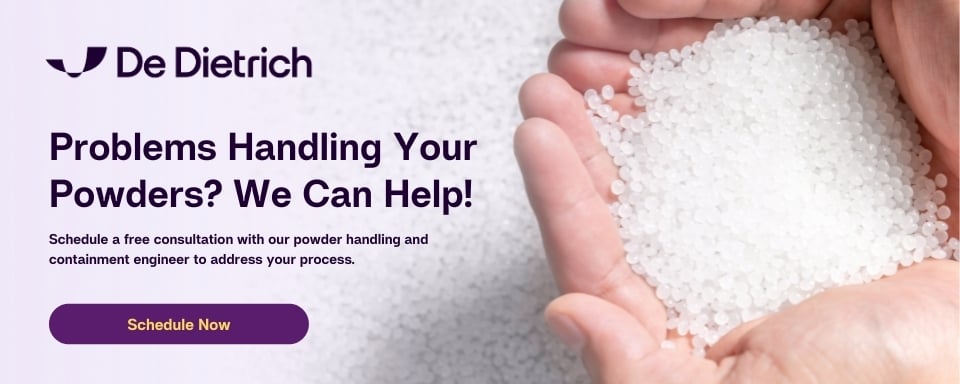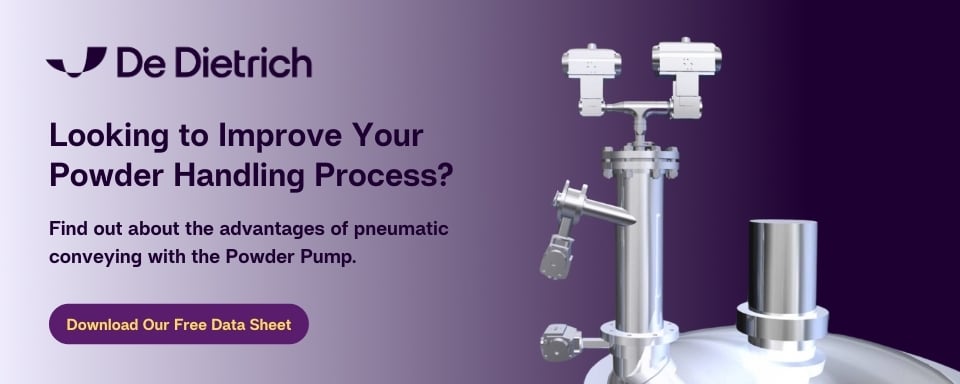Increasing Process Efficiency with Pneumatic Conveying

Process efficiency is a major concern in lean manufacturing, a business model that strives to get more done with less. Through the implementation of “waste reduction thinking”, the objective is to remove non-value adding activities from a process in order to optimize it. There are various forms of inefficiency or “waste” that can plague even the most regimented process. By identifying areas of your process that need improvement, you can work towards a more efficient, automated operation.
When it comes to solids handling, inefficient motion is often an area that is identified as needing improvement. Unnecessary motions in a process are movements, by either man or machine, which are not as small or simple as they can be. For example, an employee that bends down to retrieve heavy objects at floor level is not only at risk for injury, but is also working in a manner that is inefficient, time consuming, and possibly dangerous. Similarly, using a hoist to move material a considerable distance to a staging point might not add value to the process. All of these wasteful motions can cost you time and money and add unwanted stress on your employees and machines.
Pneumatic conveying can help your process operate more efficiently by providing control of transfer rates, and reducing the manpower required to charge it into a vessel. It can also improve product quality, reliability, and safety during transfer of material from one location to another. Here are some of the benefits pneumatic conveying can provide from a process efficiency standpoint:
Ability to charge the vessel
The most efficient way to charge a vessel is to do so without disrupting the process, and pneumatic conveying allows you to do just that. By maintaining an inert atmosphere via a closed system, you can safely introduce solids into your process while your vessel is under pressure or vacuum, and with liquids (including solvents) present in the vessel. The ability to charge solids without opening the vessel manway greatly reduces risk, processing time and labor.
Powder transfer rate can be varied and controlled
In many industries, products require a very precise chemical make-up. For this reason, it is essential to be able to accurately control the amount of raw material that enters a batch. Pneumatic conveyors can enable automated, metered charging to ensure the batch “recipe” is followed exactly to match your processes requirements. As a result of this controlled material addition rate, you may also notice an improvement in dissolution rates, and an associated reduction in batch processing time.
Reduces solids handling and eliminates hoists
Generally speaking, the more components that are in a system, the greater the chance there is for problems to arise. Pneumatic conveyors create a more streamlined process that reduces solids handling. The transfer unit can be installed directly onto the receiving vessel, and is typically connected to the primary source of powder via a flexible hose, thus reducing the need for overhead hoists, lifts or elevators. This arrangement also provides more flexibility in the process layout.
Controls reaction energy vs. HTM capacity
When introduced into a reactor, some powders release heat as they react with the solvent that is already present in the vessel. While many reactors have an external jacket through which cold liquid can be pumped, the amount of heat the Heat Transfer Module (HTM) can remove is limited. These limitations are due to several factors including, jacket surface area, temperature differential between the jacket fluid and reactor contents, coolant flow rate, and liquid properties. In operations where the heat generated from the reaction is too much for the HTM to remove, the rate at which the powder is introduced into the reactor must be controlled. With select pneumatic conveyors, metered charging is an option that helps prevent product degradation or venting of vapors due to reactor over-pressure.
The Powder Pump from De Dietrich Process Systems is a powder handling solution that eliminates the need to manually handle powders and minimizes potential hazards by using pneumatic conveying technology to create a dust-free, closed system that enables the transfer of raw, intermediate or finished products in a contained manner from a powder container (e.g. big bag station) to a secondary piece of equipment (e.g. reactor). The ability to charge to a vessel under pressure or vacuum and with liquids present in the vessel improves efficiency and positively impacts environmental performance as well as the overall optimization of your process
For for more information about DDPS powder handling technology read our Powder Handling Solutions Brochure. You can also contact us online, or for a free assessment to see how the Powder Pump can be incorporated into your process, fill out our Powder Handling Application Questionnaire.


